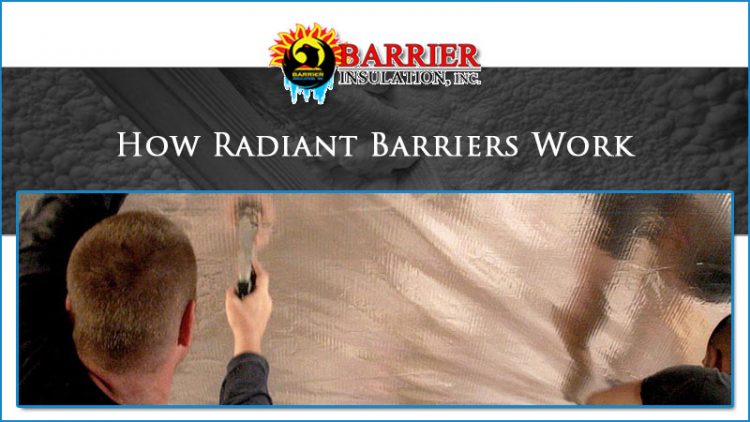Insulation 101: How Radiant Barriers Work
Most homeowners are familiar with rolls of pink fiberglass insulation or even spray foam insulation but don’t know what radiant barriers are, or how radiant barriers work. This post is meant to define what a radiant barrier is and how it helps keep your home cooler during the summer. With rising electricity prices reducing cooling costs by saving energy is on everyone’s mind.
What Is A Radiant Barrier?
A radiant barrier is a highly reflective material which reflects radiant heat. This is in contract to traditional insulations which absorb heat instead of reflecting it. This means that the heat radiating down from the sun reflects off of the radiant barrier material and away from the home. Doing so can dramatically reduce heat gain and reduce load on the air conditioning.
Radiant barrier is designed for benefit during the summer at rejecting heat but does not insulate conduction heat transfer. Conduction heat transfer is best handled by traditional insulation methods such as spray foam insulation.
How Does Radiant Barrier Work?
Heat moves from warm to cold by three methods, either: convection, conduction, or radiation. Convection is when a gas or liquid such as the air in our home is heated, becomes less dense, and then rises. Conduction is when heat travels from a hot location to a cooler location through a material. A good way to picture this is when a spoon in a hot drink and the heat travels from the part of the spoon in the cup to the end of the handle.
Traditional insulations seek to slow conductive heat down. Much like the insulation in an insulated coffee mug tries to keep the heat in your coffee or hot coco. These insulations slow the heat being conducted through attics, roofs, and walls. Radiant barriers differ in that they aren’t thick layers of insulation but highly heat reflective thin layers of foil or paint. The best radiant barriers are those that are installed facing an air space and in such a fashion to minimize dust settling on it.
Hot Sun, Hot Attic, Hot home
As the sun heats our roofs it is the radiant energy from the sun that makes the roof hot. A large portion of this heat travels by conduction through your tile or shingles, then roof decking, and into the attic side of the roof. The hot roofing material then radiates that heat into the attic. The air, floor, and ducts are heated from the radiant heat coming from hot roof materials.
Radiant barrier insulation’s job is to reflect this heat away from the attic floor, attic air, and duct systems. It is most effective when it is perpendicular to the direction that energy is hitting it. It is also worth mentioning that radiant barrier offers the best benefit the greater the temperature difference between the two sides.
Benefit Of Radiant Barrier
Radiant barrier isn’t something that has much affect in places like the north where summers are fairly mild. It has its greatest benefit in sunny and hot climates such as Arizona and the rest of the southwest. In fact some studies have shown that in hot climates homes using radiant barrier can save between 5% and 10%. This means you may be able to use a smaller air conditioner or at least use it less.
Radiant Barrier Installation
If you want to install radiant barrier in the Phoenix Valley, Barrier Insulation can help. Our team understands the Valley of the Sun and how to make homes as energy efficient as possible. We can show you how adding a radiant barrier could save you as much as 5% to 10% on your cooling energy costs.
If you’d like to learn more about how we can help
please give us a call at 602-499-2922 today!

